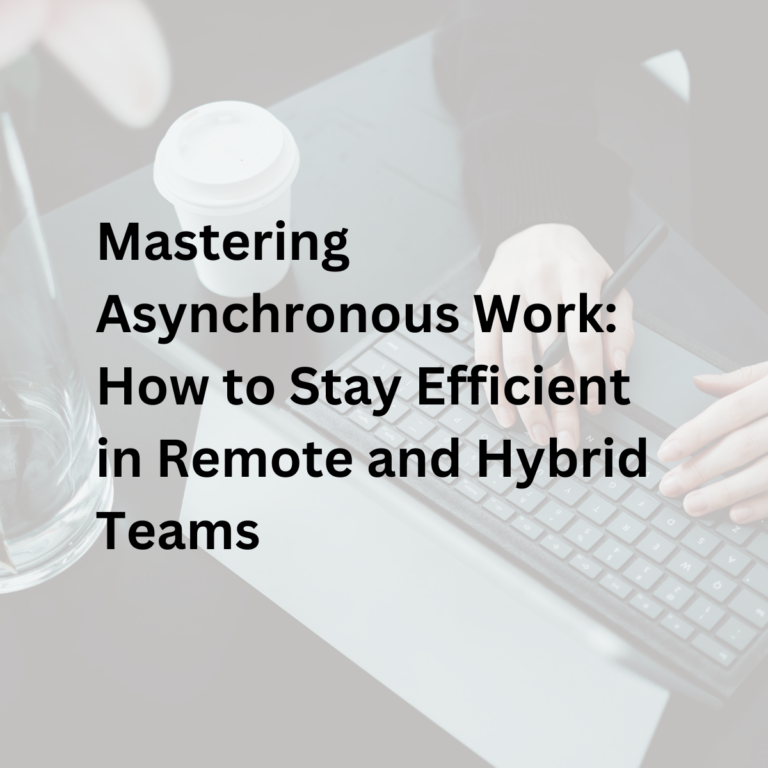In today’s fast-paced world, time management has become one of the most essential skills for personal and professional success. While countless systems and tools promise to improve productivity, the reality is that a one-size-fits-all approach rarely works. Your ideal time management system should reflect your unique needs, goals, and preferences. This guide will help you craft a personalized strategy to master your time and achieve what truly matters.
Why Personalization Matters in Time Management
Time management advice often revolves around popular methods like the Pomodoro Technique, Eisenhower Matrix, or Getting Things Done (GTD). While these frameworks can be effective, their rigidity might not align with your lifestyle or work habits. Personalizing your time management system ensures:
- Increased Effectiveness: Tailoring your approach helps you focus on what works best for you.
- Sustainability: A custom system is easier to maintain over time.
- Reduced Stress: Avoiding systems that feel unnatural or burdensome minimizes frustration.
To create a personalized time management system, follow these comprehensive steps:
1. Understand Your Current Habits and Patterns
Before adopting new strategies, assess how you currently manage your time. Awareness is the first step toward improvement.
Conduct a Time Audit
Track your daily activities for a week. Use a notebook, spreadsheet, or time-tracking app to log:
- Tasks and activities
- Duration of each task
- Energy levels during different times of the day
Analyze the Results
Identify patterns such as:
- When are you most productive?
- Which tasks consume the most time?
- Are there recurring distractions?
- How much time do you spend on high-priority activities versus low-value ones?
2. Define Your Goals and Priorities
Effective time management starts with clarity. What do you want to achieve? Align your time management system with your personal and professional aspirations.
Use the SMART Framework
Ensure your goals are:
- Specific: Clearly define what you want to achieve.
- Measurable: Establish criteria for success.
- Achievable: Set realistic expectations.
- Relevant: Focus on goals that align with your values.
- Time-bound: Set deadlines to create urgency.
Categorize Your Priorities
Divide your tasks into categories:
- High-priority: Essential and impactful.
- Medium-priority: Important but not urgent.
- Low-priority: Non-essential or nice-to-have tasks.
Use tools like the Eisenhower Matrix to differentiate between urgent and important tasks.
3. Choose the Right Tools and Techniques
Your time management toolkit should align with your personality and workflow. Explore and experiment with various methods to find what suits you best.
Popular Time Management Techniques
- Pomodoro Technique: Work for 25 minutes, then take a 5-minute break. Ideal for combating procrastination and maintaining focus.
- Time Blocking: Allocate specific blocks of time to tasks or activities. Helps structure your day and minimize multitasking.
- Eisenhower Matrix: Categorize tasks by urgency and importance to prioritize effectively.
- Getting Things Done (GTD): Focus on capturing, organizing, and processing tasks systematically.
Essential Tools
- Digital Calendars: Google Calendar, Outlook, or Apple Calendar for scheduling.
- Task Management Apps: Todoist, Trello, or Asana for organizing tasks.
- Time Tracking Apps: Toggl, Clockify, or RescueTime to monitor your time.
- Notebooks and Planners: For those who prefer analog systems.
4. Adapt Based on Your Productivity Cycles
Recognize that your energy and focus levels fluctuate throughout the day. Align your tasks with your natural rhythms.
Identify Your Chronotype
Your chronotype determines whether you are a morning lark, night owl, or somewhere in between. Schedule your most demanding tasks during your peak productivity hours.
Use the Two-Hour Rule
Research shows that most people have two peak hours of productivity each day. Protect these hours for deep, focused work.
5. Build Flexibility into Your System
Rigid systems can crumble under unexpected changes. A flexible system allows you to adapt without derailing your progress.
Plan for Buffer Time
Include buffer periods between tasks to accommodate unforeseen delays or emergencies.
Use the 80/20 Rule
Also known as the Pareto Principle, this rule suggests that 80% of your results come from 20% of your efforts. Focus on high-impact activities and be willing to adjust less critical ones.
6. Incorporate Regular Reviews
Continuous improvement is key to long-term success. Regularly review and refine your time management system.
Weekly Reviews
- Reflect on the past week’s successes and challenges.
- Adjust your plans for the upcoming week.
- Update your task list and goals.
Monthly Reviews
- Assess progress toward your long-term goals.
- Identify patterns or habits that need improvement.
- Experiment with new techniques or tools if needed.
7. Combat Common Time Management Pitfalls
Even the best systems can falter without proactive strategies to address common challenges.
Overcommitting
Learn to say no to avoid overwhelming your schedule. Use a decision-making framework to assess new commitments.
Procrastination
Break large tasks into smaller, manageable steps. Reward yourself for completing each milestone.
Distractions
Create a dedicated workspace, minimize notifications, and use apps like Focus@Will to enhance concentration.
8. Leverage Accountability
Sharing your goals with others can boost motivation and consistency. Consider:
- Accountability Partners: Work with a friend or colleague to stay on track.
- Public Commitments: Announce your intentions to create external pressure.
- Coaching: Hire a coach or mentor for guidance and support.
9. Celebrate Successes
Recognizing and celebrating achievements reinforces positive habits and keeps you motivated.
- Reward yourself for completing major milestones.
- Reflect on how far you’ve come to maintain perspective.
Final Thoughts
Crafting your own ideal time management system is a journey of self-discovery and experimentation. The key is to remain flexible and open to change. Regularly evaluate your approach and adapt as your needs evolve. By aligning your system with your unique goals and preferences, you’ll not only manage your time effectively but also create a life that feels balanced and fulfilling.
Start small, stay consistent, and remember: mastering time management is not about squeezing more tasks into your day—it’s about making space for what truly matters.







